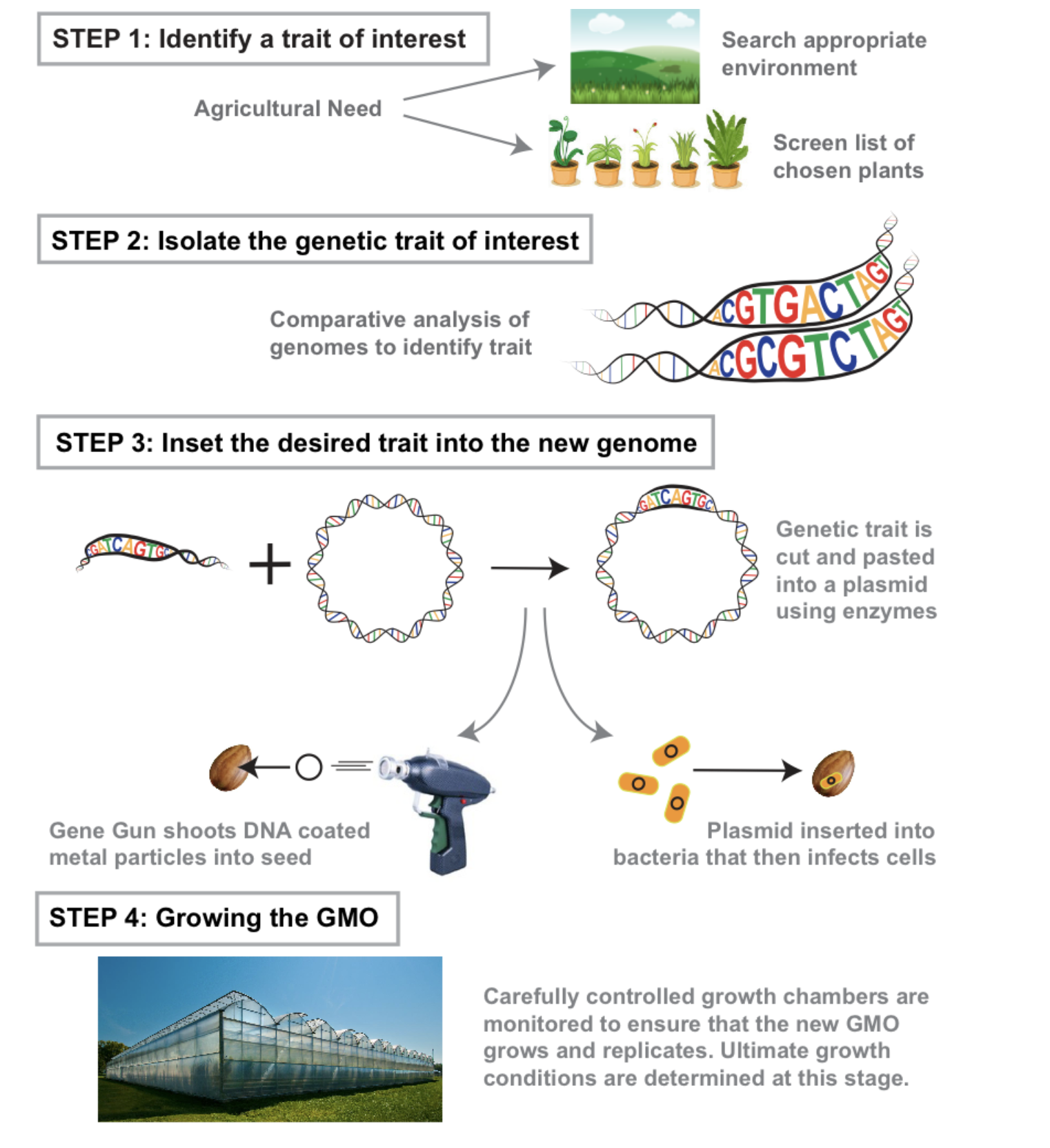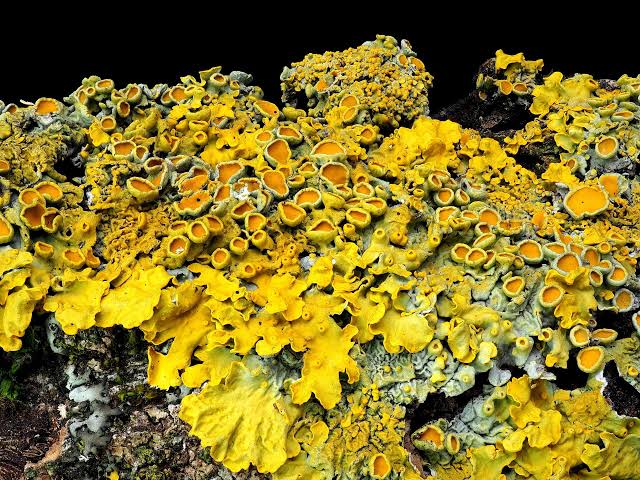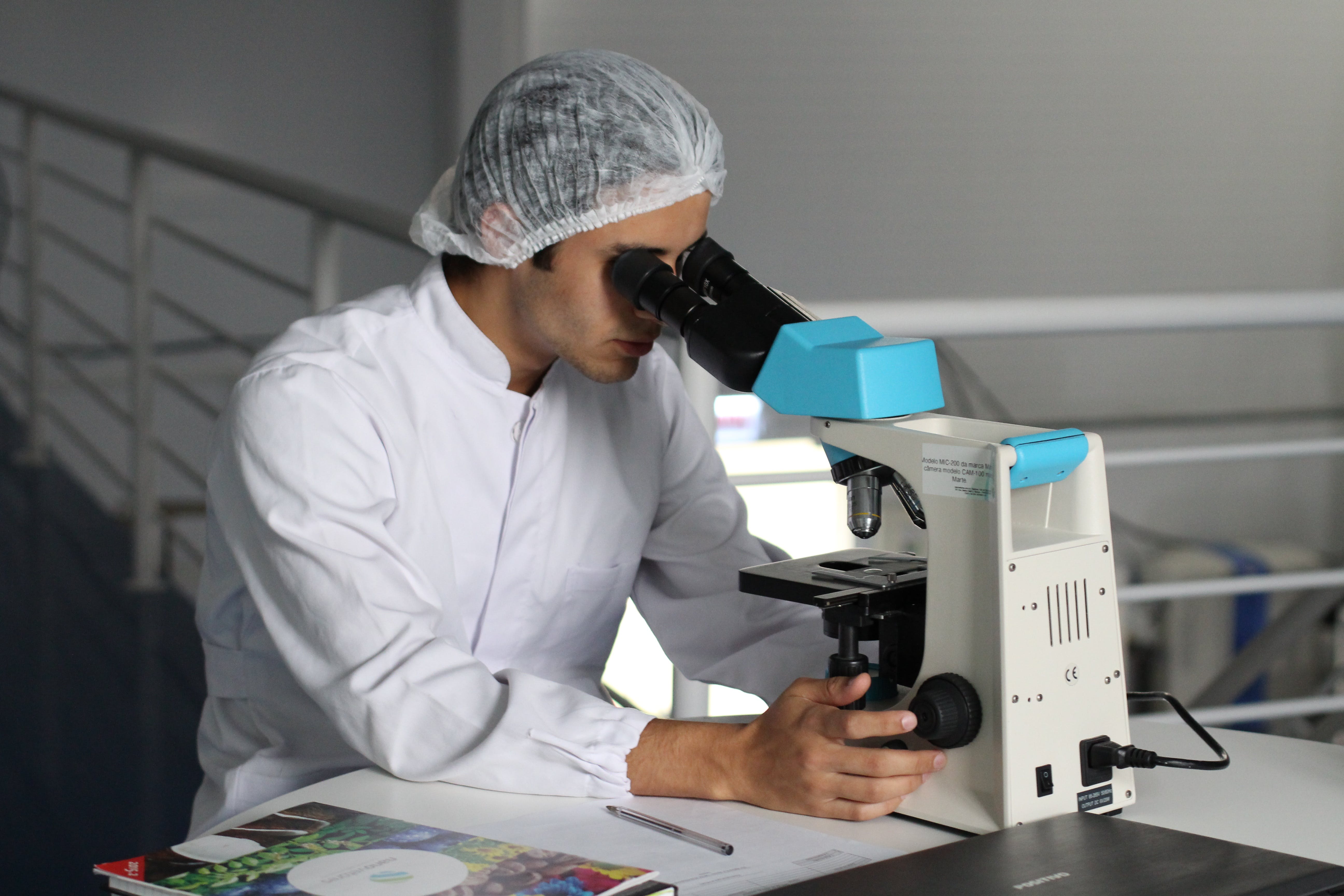Designing a GMO 🧬
07/11/2023 - 09/11/2023

The task 📚
The delivery for this seminar was the ideation of a GMO, or genetically modified organism. This term refers to any organism whose genetic material has been altered using genetic engineering techniques. GMOs are used in various applications, including agriculture, medicine and environmental management. However, the use of GMOs is a subject of debate regarding issues such as safety, labeling, and environmental impact. In order to create a GMO ourselves, we will follow the steps proposed in the article HOW TO MAKE A GMO by Chelsea Powell, published on the Harvard blog.

Getting started...
First off, we will identify a trait of interest. This will begin by identifying a desirable trait found in nature that we might want to introduce into another organism. For my GMO, I’ve decided to look for Xanthoria parietina changing color properties. Xanthoria parietina is a type of lichen, a unique and complex life form that is a symbiotic partnership between a fungus and a photosynthetic partner. Xanthoria parietina is often found on tree bark, rocks, walls, and other surfaces. It is characterized by its orange-yellow color and its leafy, or foliose, growth form, with edges that can resemble leaf-like structures. The color-changing properties that it possesses are based on the environmental conditions of its context, including the presence of pollutants. Its big resistance to air pollution and high resistance to UV light make this trait especially interesting to apply to humans. This way, we will develop a protective skin when exposed to the sun and pollution.

Next UP
The second step will be to isolate the genetic trait of interest. In this step, the goal is to pinpoint the specific genes responsible for the trait of interest. To do it, scientists compare genomes within a species or across different species that share a trait. In some cases, they might use a "knockout" method, where they sequentially deactivate parts of a genome to find the genes necessary for the trait. In this case, the pigment parietin is the primary compound responsible for the characteristic color of Xanthoria parietina. It is a secondary metabolite produced by the lichen and serves several functions, including protection against ultraviolet (UV) light and UV-B radiation. Parietin absorbs blue light, and its production can be stimulated by exposure to UV-B, which then helps protect the lichens from damage. However, I’ve not been able to find any information about the specific gene or set of genes directly responsible for the color change in response to environmental factors such as air pollution. At this point, if we wanted to keep making this GMO, we would need to wait for the gene to be identified to keep going. As this exercise is made at a conceptual level, we will imagine it exists and proceed with the design of our GMO.

Finalizing the GMO
The next step will be to insert the desired genetic trait into the new genome. This process will involve physically adding the desired DNA to the target organism's genome. This could be done using gene guns to shoot metal particles coated with DNA into plant or animal tissue, or using bacteria to insert DNA. As this GMO will be applied to humans, this process will have a few more steps. After identifying and isolating the gene, we will need to use synthetic biology to adapt the gene for compatibility with human cells. This will be done by re-engineering the gene to ensure it is expressed correctly in human cells. After this, a safe and effective delivery system would need to be developed to introduce the gene into human skin cells. A way to do this could involve viral vectors or nanoparticles. Once this delivery system is developed, rigorous testing and approval by regulatory bodies such as the FDA will be required, and after this, significant ethical questions will require public discourse and review. If this kind of treatment is approved by society and is considered safe and potentially effective, multiple animal tests will be conducted before it is finally applied to humans.

Resources
Comparative Studies on Xanthoria Parietina, a Pollution Resistant Lichen, and Ramalina Duriaei, a Sensitive Species. II. Evaluation of Possible Air Pollution-Protection Mechanisms
Air quality assessment in different environmental scenarios by the determination of typical heavy metals and Persistent Organic Pollutants in native lichen Xanthoria parietina
Antimony as a tracer of non-exhaust traffic emissions in air pollution in Granada (S Spain) using lichen bioindicators
Comparative Studies on Xanthoria Parietina, a Pollution Resistant Lichen, and Ramalina Duriaei, a Sensitive Species. I. Effects of Air Pollution on Physiological Processes